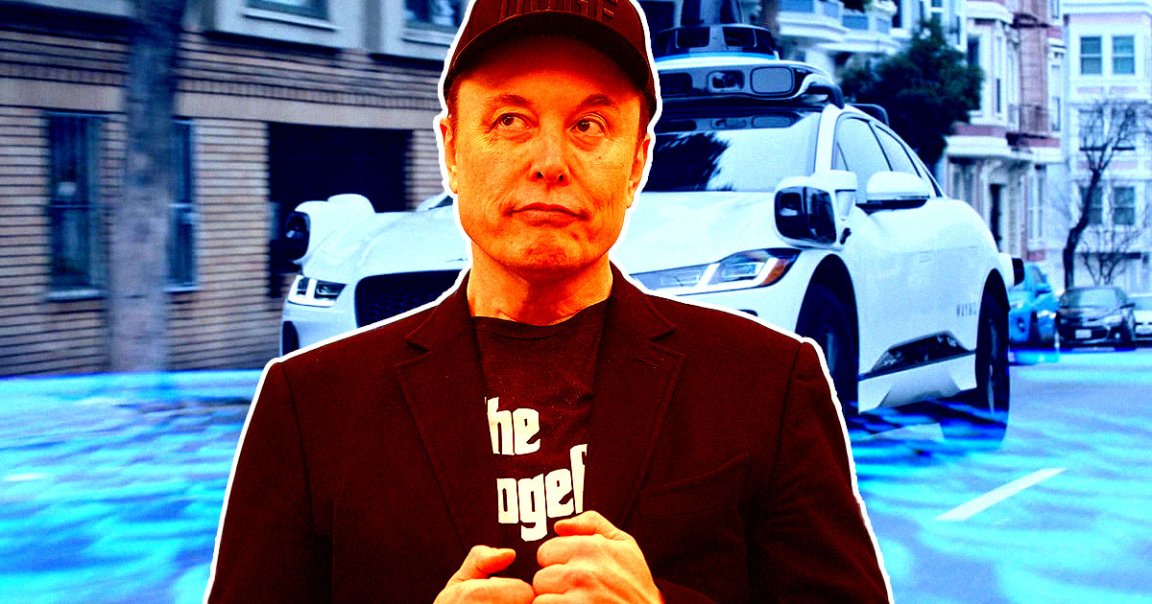
Tesla CEO Elon Musk is trying to ward off critics of his approach to autonomous driving.
Many years ago, the mercurial billionaire decided to rely exclusively on cameras — rather than LIDAR and radar sensors, like Tesla’s competitors — for the carmaker’s driver assistance software. Critics have long pointed out the limitations of such an approach, arguing that visual sensors can easily be fooled by anything from severe weather to a wall painted to look like the road beyond it.
Musk is clearly frustrated. On Monday, he boosted a user on X-formerly-Twitter claiming that “it’s becoming increasingly clear that Elon is right about the use of LiDAR” and that “sensor fusion is not optimal for autonomous driving, as evidenced by countless incidents of Waymo blocking intersections, getting stuck in traffic for no reason, getting confused in construction zones and even worse going in the lane of opposing traffic.”
The user had shared a video showing a Waymo robotaxi plowing down the wrong side of the road, aggressively forcing a human driver in front of it to back up.
Clearly chuffed to see a competitor flailing, Musk gloated: “But what do I know about technology.”
But considering Tesla’s robotaxis — “ten to twenty” of which rolled out last month as part of an extremely limited trial in a geofenced area of Austin, Texas — have suffered from those exact issues as well, Musk is the pot calling the kettle black.
Despite only being on the road for just over a month, Tesla’s fleet of robotaxis has already been seen braking erratically, jerking the steering wheel back-and-forth, driving twice the speed limit — and driving down the opposing lane of traffic, much like the Waymo Musk was assailing.
Put simply, truly safe self-driving is a very hard technical problem, and nobody — not even Waymo, which is currently wiping the floor with Tesla — has cracked the code quite yet.
And that’s not to mention the enormous head start the Alphabet-owned autonomous driving company has on him. The company boasted earlier this month that it’s completed 100 million miles of fully autonomous driving, with the help of a fleet of 1,500 vehicles, spread out across five major urban areas.
Musk’s carmaker has a lot of catching up to do. Its dozen or so robotaxis in Austin can’t even be hailed by the broader public at the time of writing, because its initial rollout is limited to a handpicked list of Tesla enthusiasts and employees.
However, the point remains that Waymo is equally struggling to get its vehicles to behave, even with the LIDAR sensors. Despite years of running an autonomous ride-hailing service, we’ve seen horrible accidents and even rare instances of sketchier situations. Their fleet has also been the victim of widespread vandalism, highlighting significant public backlash against the idea of replacing human drivers.
In short, Musk isn’t exactly in a position to point fingers. His company’s safety track record, particularly when it comes to its erroneously-named “Full Self-Driving” driver assistance software, is anything but clean.
More on Tesla: Tesla Sold Its Bitcoin at Pretty Much the Worst Moment Imaginable